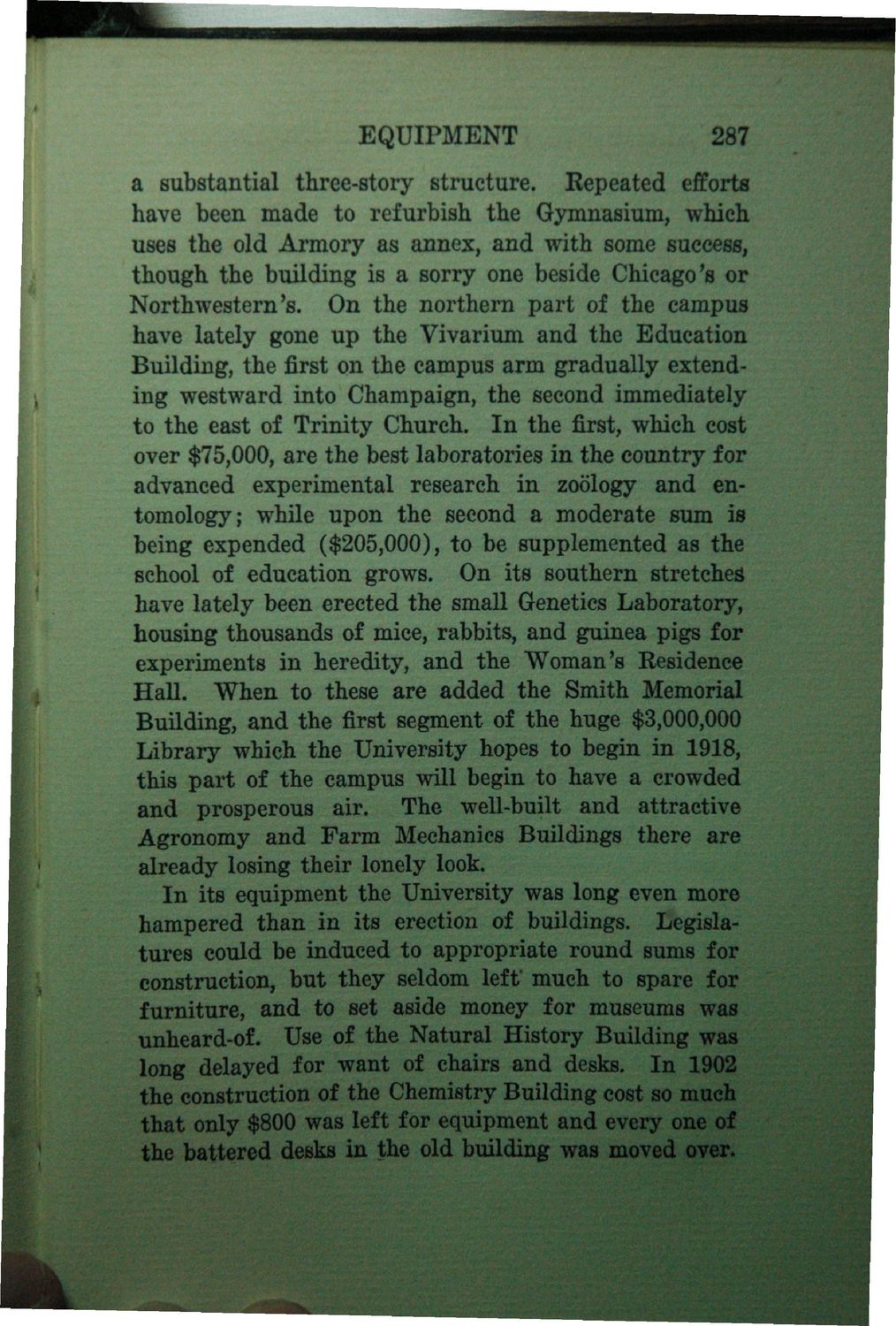| |
| |
Caption: Book - History of the University (Nevins)
This is a reduced-resolution page image for fast online browsing.

EXTRACTED TEXT FROM PAGE:
EQUIPMENT 287 a substantial three-story structure. Repeated efforts have been made to refurbish the Gymnasium, which uses the old Armory as annex, and with some success, though the building is a sorry one beside Chicago's or Northwestern's. On the northern part of the campus have lately gone up the Vivarium and the Education Building, the first on the campus arm gradually extending westward into Champaign, the second immediately to the east of Trinity Church. In the first, which cost over $75,000, are the best laboratories in the country for advanced experimental research in zoology and entomology; while upon the second a moderate sum is being expended ($205,000), to be supplemented as the school of education grows. On its southern stretches have lately been erected the small Genetics Laboratory, housing thousands of mice, rabbits, and guinea pigs for experiments in heredity, and the Woman's Residence Hall. When to these are added the Smith Memorial Building, and the first segment of the huge $3,000,000 Library which the University hopes to begin in 1918, this part of the campus will begin to have a crowded and prosperous air. The well-built and attractive Agronomy and Farm Mechanics Buildings there are already losing their lonely look. In its equipment the University was long even more hampered than in its erection of buildings, legislatures could be induced to appropriate round sums for construction, but they seldom left" much to spare for furniture, and to set aside money for museums was unheard-of. Use of the Natural History Building was long delayed for want of chairs and desks. In 1902 the construction of the Chemistry Building cost so much that only $800 was left for equipment and every one of the battered desks in the old building was moved over. m
| |